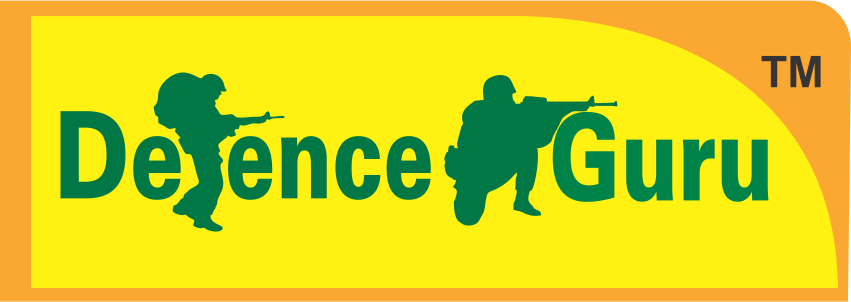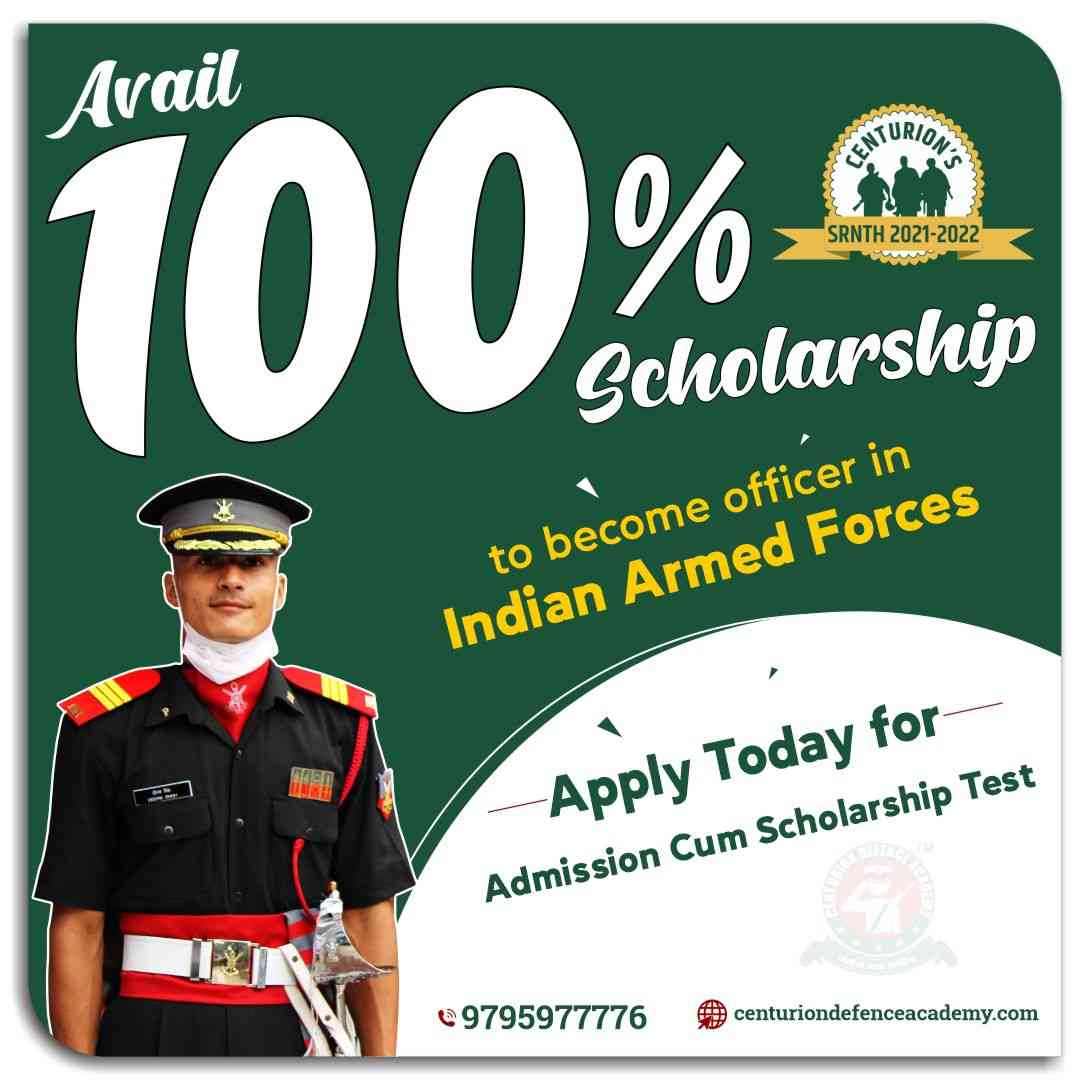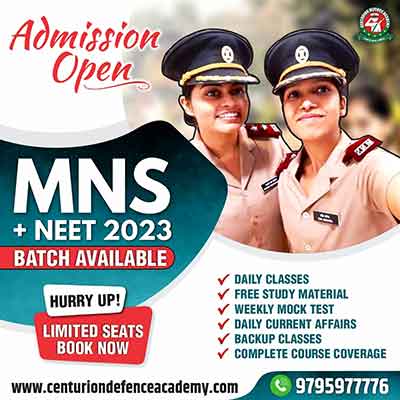CDS Exam 2019 Syllabus Details for IMA and OTA
The Combined Defence Services (CDS) examination comprises of the following stages:
|
Stages |
Type of questions |
Language of Question Paper |
Duration |
Marks |
|
Stage I: Written Examination |
Objective Type Only |
English / Hindi |
2 hours each paper |
100 for each paper |
|
Stage II: Intelligence test & Interview by SSB |
- |
- |
- |
300/ 200 |
I) Written Exam
The scheme of the CDS written exam (subject combination) is slightly different for admission to various academies:
|
Indian Military Academy |
Naval Academy |
Air Force Academy |
Officers Training Academy |
|
|
Subjects |
English |
English |
English |
English |
|
General Knowledge |
General Knowledge |
General Knowledge |
General Knowledge |
|
|
Elementary Mathematics |
Elementary Mathematics |
Elementary Mathematics |
- |
The total marks for CDS written exam for Indian Military Academy, Naval Academy & Air Force Academy will be 300 marks.The total marks for CDS written exam for Officers' Training Academy will be 200 marks. The questions are in the MCQ format with 4 options for each question. There is a negative marking of 0.33 marks for every wrong answer. The 340 questions need to be attempted in 360 minutes (3 hours).
The standard of the paper in Elementary Mathematics will be of class 10 level. The standard of papers in other subjects will approximately be such as may be expected of a graduate of an Indian University. The question papers for General Knowledge (GK) and Elementary Mathematics will be set in both Hindi and English.
Detailed Syllabus For Combined Defence Services (CDS) Written Examination
ENGLISH (CODE No. 01)
The question paper is designed to test the candidates’ understanding of English and usage of words.
GENERAL KNOWLEDGE (Code No. 02)
General Knowledge includes knowledge of current events, history of India and Geography.
ELEMENTARY MATHEMATICS (Code No. 03)
ARITHMETIC: Number System-Natural numbers, Integers, Rational and Real numbers. Fundamental operations-addition, subtraction, multiplication, division, square roots, decimal fractions etc.
Unitary method- time and distance, time and work, percentages, applications to simple and compound interest, profit and loss, ratio and proportion, variation etc.
Elementary Number Theory - Division algorithm. Prime and composite numbers. Tests of divisibility by 2,3,4,5,9 and 11. Multiples and factors. Factorisation Theorem. H.C.F. and L.C.M. Euclidean algorithm, Logarithms to base 10, laws of logarithms, use of logarithmic tables.
ALGEBRA: Basic Operations, simple factors, Remainder Theorem, H.C.F., L.C.M. Theory of polynomials, solutions of quadratic equations, relation between its roots and coefficients (Only real roots to be considered). Simultaneous linear equations in two unknowns-analytical and graphical solutions. Simultaneous linear equations in two variables and their solutions. Practical problems leading to two simultaneous linear equations or inequations in two variables or quadratic equations in one variable & their solutions. Set language and set notation, rational expressions and conditional identities, Laws of indices.
TRIGONOMETRY: Sine x, cosine x, Tangent x when 0
GEOMETRY : Lines and angles, Plane and plane figures, Theorems on (i) Properties of angles at a point (ii) Parallel lines, (iii) Sides and angles of a triangle, (iv) Congruency of triangles, (v) Similar triangles, (vi) Concurrence of medians and altitudes,
(vii) Properties of angles, sides and diagonals of a parallelogram, rectangle and square (viii) Circles and its properties including tangents and normals, (ix) Loci.
MENSURATION : Areas of squares, rectangles, parallelograms, triangle and circle. Areas of figures which can be split up into these figures (Field Book), Surface area and volume of cuboids, lateral surface and volume of right circular cones and cylinders, surface area and volume of spheres.
STATISTICS : Collection and tabulation of statistical data, Graphical representation frequency polygons, histograms, bar charts, pie charts etc. Measures of central tendency.
II) SSB Interview
Candidates who qualify the written exam will have to appear before the Service Selection Board (SSB) for an interview (personality test.) You may have to appear in any of the 3 SSB centres in India: Allahabad, Bhopal or Bangalore.
The total marks for SSB round for Indian Military Academy, Naval Academy & Air Force Academy will be 300 marks.
The total marks for SSB round for Officers' Training Academy will be 200 marks.
The SSB shortlisting consists of two stages conducted over a total of 5 days. You need to qualify in stage-1 in order to further to stage-2. Details about these stages:
1. Stage 1 would include the following (Day 1):
a. An intelligence test known as "Officer Intelligence Rating (OIR)" - there would be a verbal test and a written test
b. A "Picture Perception & Description Test (PP&DT)"- You would have to describe a picture that is shown for 30 seconds, writing in detail about whatever is shown in the picture. You would be given 4 minutes for the same.
c. After writing about the picture, all candidates would be divided into groups of 15 and would have to discuss about the same photograph and arrive at a common conclusion about it.
Stage 1 would be conducted over 1 day. Candidates who don't clear this stage, would be asked to go back.
2. Stage 2 would be conducted over 4 days and would consist of a variety of activities through which your personality would be judged by 3 different people viz an interviewing officer (IO), a group testing officer (GTO) and a psychologist:
Day 2:
Different types of "psychological tests" would be held:
- Thematic Apperception Test (TAT): The word "apperception" means to be fully aware of an idea or feeling. In this test, 12 pictures (that includes a blank image) would be shown. Each of these pictures would be flashed for 30 seconds each and you would be given 4 minutes to write a story around the situation shown by these 12 images, what was going on in these pictures and what would be the final outcome. Fot the blank image, you have to imagine a picture of your choice and write a story about it.
- Word Association Test (WAT): 60 words would be flashed in front of you for 15 seconds each and you have to jot down the whatever comes to your mind about each word.
- Situation Reaction Test(SRT): You would be provided with a booklet that lists 60 everyday situations in life. You will have to respond to each situation by writing down how you would react (think/ feel/ act) in each case.
- Self Description Test(SD): You will be required to write 5 paragraphs related to your opinion about your parents/guardian, friends, teachers/ superiors.
Day 3:
Various tasks would be conducted by a "Group Testing Officer" (GTO):
- Group Discussion (GD): You would be given two topics (one on a social issue and one related to a current event) to discuss informally in a group. The group discussion on each topic will last 20 minutes. You are not expected to arrive at any definitive conclusion.
- Group planning exercise(GPE): This exercise would be conducted as follows - a given model would be explained, the GTO would then read out its narrative, you would be then given 5 minutes to read it yourself. Another 10 minutes will be spent in writing your individual solution to the problem and the next 20 minutes would be spent discussion the solutions in a group. Whatever final solution/ conclusion is derived, would have to be narrated.
- Progressive group task: This will be an outdoor activity in which four obstacles with progressively increasing levels of difficulty must be completed in 40 - 50 minutes. Structures, helping material and load will be provided to the group.
- Group obstacle race: One group will be pitched against another group to cross a set of six obstacles with a snake like load to carry.
- Half group task: This would be similar to the progressive group task with helping material and load to be carried. Every group will be divided into two sub-groups and would be given the same obstacle in such a manner that when one group is working, the other group cannot see it. Each group would have to complete the task in 15 minutes.
- Lecturette: A lecturette means a "short lecture." This is not a group task. You would be required to give a short talk (on a topic that you may choose from 4 given topics) to the group. You will be given 3 minutes to prepare for your lecturette. Topics may vary from "women empowerment", "yoga", "stem cell research", "capital punishment for rape" etc.
Day 4:
This day would consist of some more group tasks:
- Individual Obstacles: A set of 10 obstacles (numbered from 1-10; each number denoting the pint it carries) would have to be tackled individually within 3 minutes.
- Command Task: Each individual is selected as their group's leader for one task consisting of an obstacle to be completed in 15 minutes (like the Progressive Group Task)
- Final Group Task: This would include an obstacle similar to the Progressive Group Task, to be finished in 15 - 20 minutes.
Day 5:
There would be a closing address, a conference and announcement of results followed by dispersal.
During the "conference", all the three assessors I.E. psychologist, interviewing officer and GTO meet together to discuss each candidate's performance and decide their final result. To remove any doubt, you are called in, so that they can judge you one last time by asking a few questions.
The "interviews" are conducted from day 1-4 by the interviewing officers in the afternoon.






